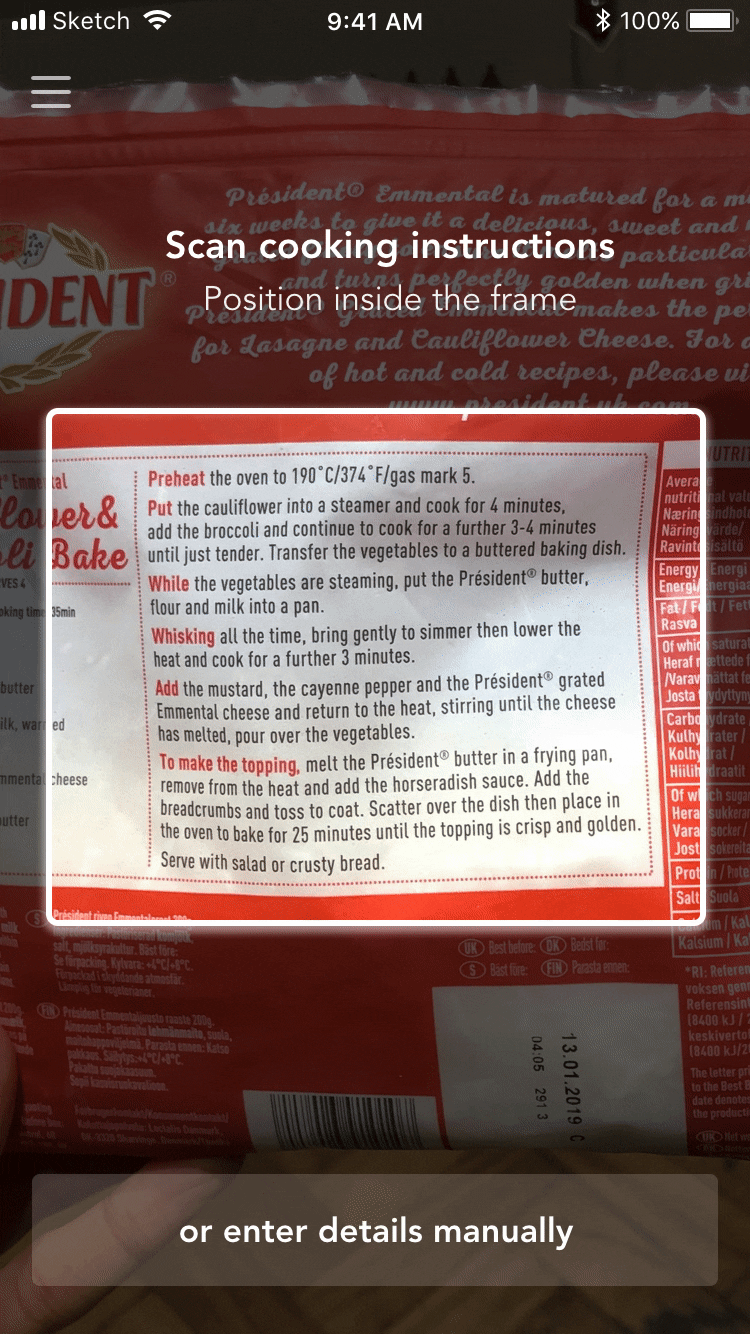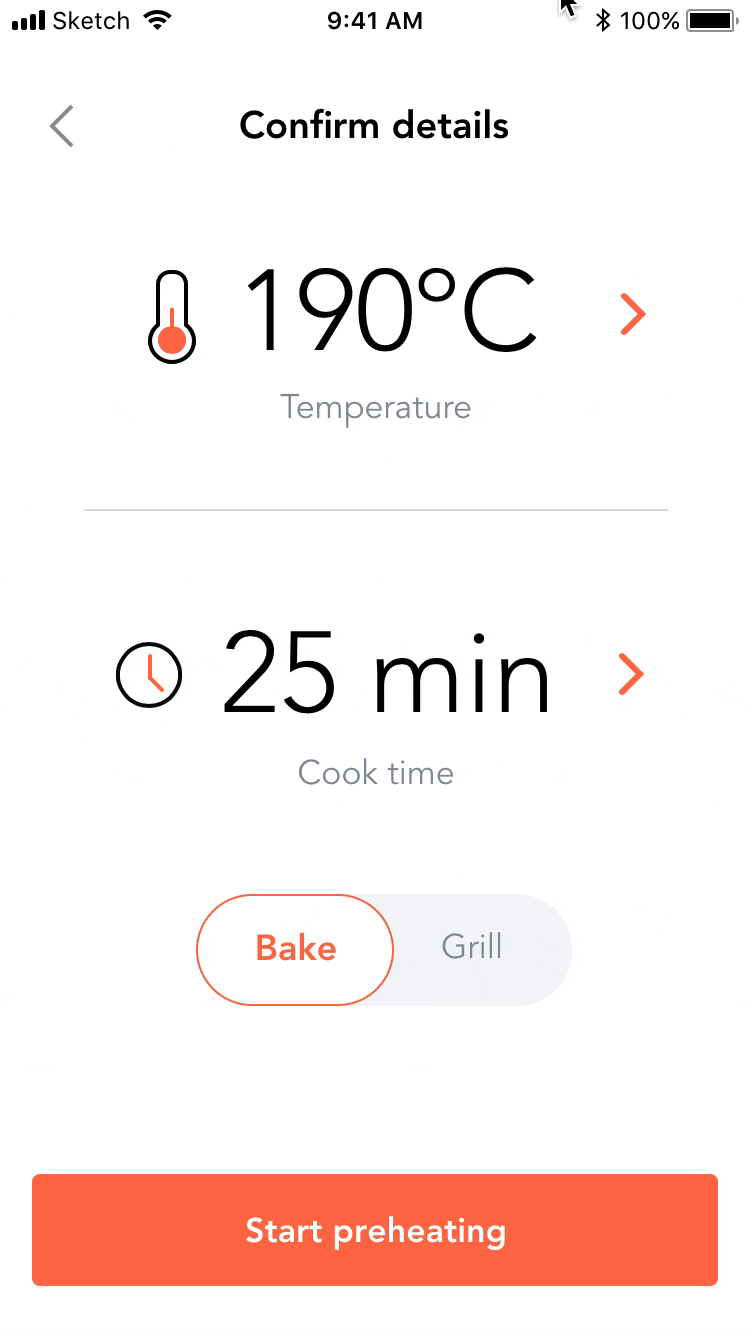zocdoc provider dashboard & business model flip
Zocdoc is a healthcare company that allows patients to discover and book with doctors online, and helps doctors grow their business.
I was the lead IC designer on all things related to one of the biggest projects in our company's history: transforming our business model for massive scale. A central challenge crucial to success of this flip from a subscription to variable revenue model was figuring out a way to convey to doctors the value Zocdoc provides to their practice - an ambiguous concept we'd never attempted in our UI before.
After significant discovery work, iteration and validation, we shipped to all doctors in America a new provider dashboard that puts doctors' performance front and center; a new budgeting system; and a new provider design system (see breakdown in next section).
monzo design challenge
Design an MVP app for the next-gen smart oven, given the context & constraints in the prompt.
Solution (Video Walkthrough)
Below is an overview prototype of the solution. More in depth screens to follow.
Framing questions
How do people use ovens today?

What are the main problems in this flow?
-
It takes time and effort to get started.
Unless the cook already knows the temperature and time to set the oven, he must find this information from the food packaging, cookbook, or recipe, confirm everything is inputted correctly, and then begin the preheating process.
Opportunity: Streamline the data entry process.
-
Ovens require regular monitoring, creating a burden for the chef.
A timer gives a rough indication of completion time, but it's often necessary to check on the food throughout and adjust cook time accordingly. This creates the hassle of repeated return visits to the kitchen, making it challenging for the cook to use the time productively.
Opportunity: Let the oven do the work. Inform when attention is needed at the right times, allowing the user to focus on other things.
-
Safety
Without monitoring, ovens can be hazardous: fires, smoke, food burning, etc.
Opportunity: Prevent safety hazards. If they occur, alert and mitigate.
Who are the user types that could benefit from a smart oven?
-
On-the-go
Time-constrained people like professionals or parents cooking out of necessity; optimizing for efficiency.
Main considerations:-
Speedy setup; minimize their involvement in the cooking process
-
Prioritize top/most common oven needs (baking, grilling, setting a time & temperature)
-
-
Leisure
Cooking is fun and not a 'chore'; not as time constrained
Main considerations-
More likely to also be interested in secondary details like oven cleanliness, food temperature, etc.
-
MVP Considerations
Users
We'll start with "on-the-go" users for defining an MVP, as this applies to a broader audience and will set a foundation to scale to leisure users in the future. We can summarize on-the-go needs as follows:
-
An easy (effortless) way to get started, e.g. inputting data like temperature and time
-
Freedom from frequent in-person monitoring so time can be spent more productively
-
Reassurance that even if not heavily involved during the cooking process, the kitchen won't burn down
Features
There are lots of potential features with this oven, but from a strategy and technical cost perspective, we'll focus on the ones that validate the key offerings of this MVP. This means a set of features that both 1) supports the common oven use cases for on-the-go users, and 2) leverage our technology to offload work from the user while still providing them sufficient control. We can validate and iterate on the MVP, while building up to a more robust experience.
Assumptions
-
"Top element power level" = "bake"
-
"Bottom element power level" = "grill"
-
We can map an entered temperature (Air Temperature) to the top/bottom element power level value in Watts (e.g., Watts don't need to be explicitly entered by the user)
-
Fan speed is not important in most ovens; we will default to the 'normal' speed, and specific RPM adjustments is considered a 'leisure user' power feature
-
Food thermometer is considered a 'leisure user' power feature, as it's not standard in most ovens today

Solution
The product takes a new approach to cooking, leveraging technology to reduce the burden on the user.
-
Uses OCR technology to provide a quick and reliable way to input cooking information with minimal user effort.
-
Sends the user relevant information at just the right times through push notifications, allowing them to focus on other things and engage only when needed.
-
Above all, it provides to the user enough transparency and customization throughout the entire cooking process, helping the user still feel ultimately in control.
I didn't have time to dive into the safety portion, but some ideas for an MVP on safety features are mentioned at the end.
Walkthrough
-
Defaults to camera view, and OCR's relevant information from packaging, recipe, etc. Provides manual option for more standard input experience

-
Automatically populates & lets user confirm, while still allowing customization

-
User gets an idea of how long preheating will take, and gets notified when ready


-
Timer starts automatically once food weight is detected. Timer step was consolidated in the set-up portion so that user doesn't need to pick up the phone again.
-
The cooking phase focuses on what's important to the user, while exposing more options below the fold (e.g. swipe up on card)
-
Add quick time presets. I assumed 5 and 10 minutes are common, but we should validate top increments through user research
-
Adjust temperature
-
Turn oven off at any time
-


-
Notifications inform user at relevant points in the cooking cycle


-
The 'end' screen doesn't refer to the food as being 'done', since this is subjective & up to the end user. Instead if prompts for a final validation.

Remaining MVP Features
I didn't have time to dive into Safety features, but the last part of MVP that I would explore are basic safety features, like:
-
a smoke alarm sensor that alerts the user through a notification + sound on the oven
-
option to automatically shut off oven as soon as food is removed or if mobile device is x km from home
Post MVP
The roadmap will adjust based on learnings from MVP, but given the direction outlined above, I would explore features like the following:
-
Continue to optimize around efficiency
-
Save cooking history + add presets?
-
-
Build towards richer cooking features ("leisure/power users")
-
Option to set food temperature instead of oven temperature
-
Oven cleanliness monitor
-